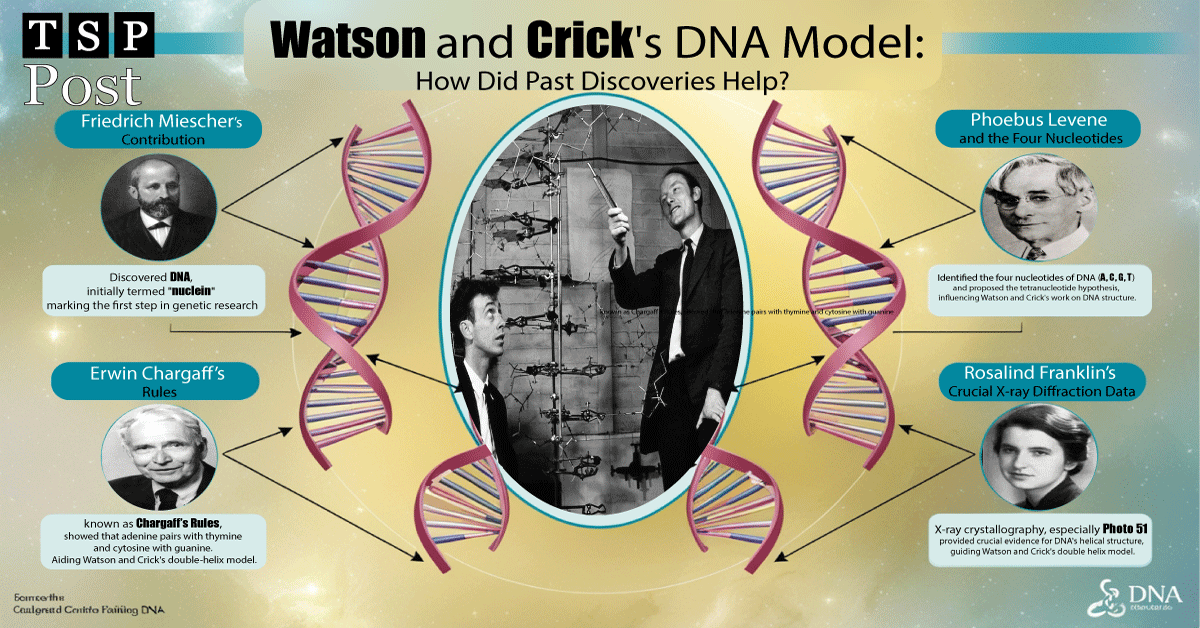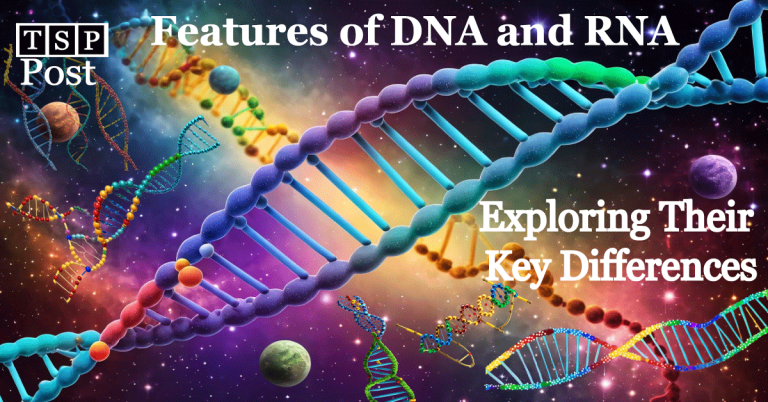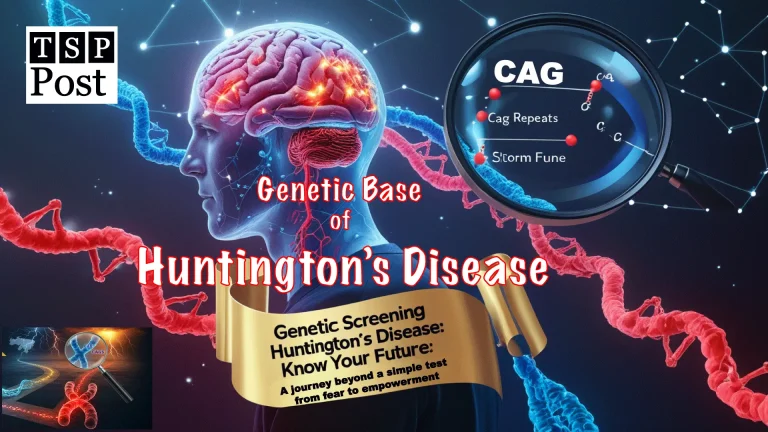Watson and Crick’s DNA Model: How Did Past Discoveries Help?
“Watson and Crick’s DNA model” is one of the famous phrases in the field of life sciences. Undeniably, the discovery of the DNA model by James Watson and Francis Crick changed what we know about genetic material forever. Not only did it signify a crucial turning point in biology, but its enduring impact on various fields of life sciences continues to influence these disciplines including; genetics, molecular biology, and biotechnology etc. Although, they are widely well-known for their groundbreaking 1953 discovery of DNA model. But in fact, their achievement was built on decades of research by many other biologists. In this comprehensive post, we will explore how the efforts of earlier molecular biologists set the stage for the development of the “Watson and Crick’s DNA model, in addition how this model became a pivotal breakthrough in the history of science.
The Foundations of the Watson and Crick’s DNA Model
First of all, we need to understand that the Watson and Crick’s DNA Model didn’t come about on its own; but it was built on the work and ideas of many others in the field. Several molecular biologists who came and worked before Watson and Crick played a vital role in laying the groundwork for molecular biology. When Watson and Crick began their research, the molecular biology community already had substantial knowledge about DNA. Despite these efforts, the structure of DNA continued to be a mystery. Therefore, the aim of this post to explore the key discoveries and assess their findingsthat assisted Watson and Crick in shaping DNA model, the groundbreaking achievement in the field of molecular biology.
The Discovery of DNA: Friedrich Miescher’s Contribution
Among these high-level discoveries, Friedrich Miescher, a Swiss physician and biochemist, made a significant advancement by discovering DNA in 1869. While studying white blood cells, Miescher isolated a new substance and termed it “nuclein.” This discovery marked the first identification of what we now recognize as deoxyribonucleic acid (DNA). Although Miescher did not yet grasp its function, his discovery represented a crucial first step in unraveling the mysteries of genetic material.
For more details on the fascinating journey behind DNA’s discovery, check out Nucleic Acids: The Discovery of Life’sGenetic Blueprint
Phoebus Levene and the Four Nucleotides
Phoebus Levene uncovered the building blocks of DNA. While conducting his DNA components study, he identified the four nucleotides that comprise DNA – A, C, G, and T. Building on this work, he put forward the ‘tetranucleotide hypothesis’, which suggested that DNA was made up of equal ratios of the four nucleotides, A, C, G, T. Although this hypothesis was later proven to be false, but still it had an important impact on an area that was later to be crucial for Watson and Crick in solving the structure of DNA – that of the composition of DNA based monomers.
Erwin Chargaff’s Rules
Indeed, the first advance in the discovery of the DNA model was the work of Erwin Chargaff in the 1940s. Chargaff opposed Levene’s earlier view of an even distribution of the four nucleotides in a strand of DNA. Instead, he found that adenine always pairs with thymine and cytosine with guanine, which is referred to nowadays as Chargaff’s Rules. It was these rules that assisted Watson and Crick in their understanding of the structure of DNA and aided them to make their most famous finding, which was the structure of the DNA double helix.
Rosalind Franklin’s Crucial X-ray Diffraction Data
No discussion of the Watson and Crick DNA Model would be complete without mentioning Rosalind Franklin whose contribution was ignored then, but surely deserves attention now. Franklin was an expert in X-ray crystallography, a technique used to determine molecular structures. Her famous photograph, known as Photo 51, provided Watson and Crick with key evidence about DNA’s helical shape. Franklin’s work was pivotal in leading Watson and Crick to correctly model the double helix, though she did not receive immediate recognition for her contribution.
Maurice Wilkins: Bridging the Gap
Another vital figure in the discovery of the Watson and Crick DNA Model was Maurice Wilkins. He worked closely with Rosalind Franklin and played a crucial role in sharing her X-ray diffraction data with Watson and Crick. Wilkins’ support and collaboration provided Watson and Crick with essential insights that helped solidify their final DNA model.
The Final Breakthrough: Watson and Crick’s Double Helix Model
Watson and Crick made use of the previously reported and/or unpublished studies concerning the structure of DNA. And finally, in 1953, they successfully integrated several decades of information and conceptualized a physical model that strongly supported existing data on the DNA molecule. They portrayed DNA as a double helix, with two strands running in opposite directions and linked by base pairs; A was paired with T, C with G. This clear structure answered many issues of how DNA replicates and how it holds the genetic material.
Significantly, their model was not merely a theoretical model. It addressed some fundamental questions, such as the possibility of self-information replication. Additionally, the model showed how the sequence of nucleotides stores genetic information. This discovery changed the world of life sciences, as it enabled the emergence of molecular biology, and opened a lot of horizons in the studies of genetics, biotechnology and medicine.
Major Points of the Watson and Crick’s DNA Model
- Double Helix Structure: Watson and Crick described DNA as a double stranded molecule oriented in the opposite direction as a twisted ladder i.e., both strands coiling around each other in opposite directions like a double helix.
- Antiparallel Strands: As earlier mentioned (point 1), both strands are antiparallel. Briefly, there are two strands of DNA, running in opposite directions such as one strand runs from 5’ to 3’, while its counterpart runs from 3’ to 5’. This particular configuration of the strand is crucial for stability and DNA replication.
- Base Pairing Rules: Nucleotides present at the same position of both strands establish pair. So specific nucleotides pair with each other: such as adenine with thymine and cytosine with guanine in the model proposed by Watson and Crick. These rules for pairing bases are important for the replication of the genetic material.
- Hydrogen Bonds: Hydrogen bonds hold together bases in these pairs. Based on hydrogen bonds there are two types of pairs i.e., A-T and C-G. Adenine bonded to thymine has 2 hydrogen bonds, while cytosine bonded to guanine has 3 hydrogen bonds, thus making C-G pairs stronger than A-T counterparts.
- Helical Shape: The geometry of DNA alters to a helical configuration. With approximately 10 base pairs winding around a single turn of the helix, this allows the genetic information to be wrapped tightly and stored in a stable state.
- Replication Mechanism: The double helix model explained how DNA could be replicated. Each strand serves as a template for creating a new complementary strand, ensuring accurate copying of genetic material.
- Complementary Strands: The two strands are complementary rather than identical. This means that each strand’s sequence determines the sequence of the other, enabling the precise replication of DNA during cell division.
Impact and Legacy of the Watson and Crick’s DNA Model
The significance of the Watson and Crick’s DNA Model cannot be overstated. It was a turning point in the biological sciences, leading to a better understanding of how genes work. The model laid the groundwork for molecular biology, shaping fields such as genetic engineering, cloning, and the Human Genome Project.
Criticisms and Ethical Considerations
Despite the praise for Watson and Crick, their discovery was not without controversy. The use of Rosalind Franklin’s data without her knowledge or consent has faced widespread criticism. Franklin’s contributions were crucial, yet she did not share the Nobel Prize awarded to Watson, Crick, and Wilkins in 1962. This ethical issue remains a topic of discussion in the history of molecular biology.
How the Watson and Crick’s DNA Model Influenced Modern Science?
The Watson and Crick’s model of DNA transformed basically the way we perceive organisms. Even today, the universally accepted structure for DNA is the double helix. This model contributed to the development of technologies such as CRISPR and genetic engineering. With the help of polyclonal DNA structures, structural biologists, biochemists, clinical chemists and drug designers are able to create pharmaceuticals, effective diagnostics and other medically relevant products. Likewise, crop scientists are utilizing DNA information to enhance usability as well as to develop resistance against adverse weather and insect infestations.
Alternative Theories Before Watson and Crick’s DNA Model
Before the introduction of the Watson and Crick’s DNA Model, various alternative theories about genetic material existed. Some molecular biologists believed that proteins, not DNA, were the carriers of genetic information because of their complexity. Others proposed simpler, single-stranded DNA models, which could not adequately explain the mechanisms of replication and inheritance. The double-helix model effectively addressed these shortcomings.
Conclusion: A Model That Changed the World
This post clearly indicates that “The Watson and Crick’s DNA Model” is one of the most iconic discoveries in life sciences particularly in molecular biology. It represents not only a pivotal moment in molecular biology but also highlights how collaborative and incremental scientific progress can be. Although, Watson and Crick are celebrated for their contribution. But it is essential to recognize the previous molecular biologists whose work laid the foundation for this breakthrough.
Understanding the structure of DNA has allowed us to unlock the secrets of life itself. From medicine to agriculture, the influence of the Watson and Crick’s DNA Model continues to shape our understanding about inheritance.
Foundations of the Double Helix: A Comparative Study of Key Discoveries
This table highlights pivotal contributions and findings in DNA research. Moreover, it illustrates how these breakthroughs laid the foundation for Watson and Crick’s revolutionary model of the double helix.
| Key Discoveries in DNA Research | Contributors | Key Findings | Relevance to Watson and Crick Model | Core Elements of the DNA Structure | Scientific Implications |
| Discovery of Nucleic Acids | Friedrich Miescher (1869) | Isolated a substance rich in phosphorus, later identified as DNA. | Established DNA as the fundamental genetic material. | Nucleic acids are crucial for heredity. | Laid the groundwork for understanding DNA’s role in genetics. |
| Chargaff’s Rules | Erwin Chargaff (1949) | Demonstrated that A=T and G=C in DNA. | Provided a basis for complementary base pairing. | Base pairing mechanism: A pairs with T, and G pairs with C. | Crucial for understanding DNA replication and structure. |
| Helical Structure Visualization | Rosalind Franklin (1952) | Captured X-ray diffraction images showing DNA’s helical shape. | Validated the double helical structure of DNA. | DNA exists as a double helix with a specific width and helical turns. | Offered empirical evidence critical to model construction. |
| Collaborative Research | Maurice Wilkins (1953) | Contributed to X-ray diffraction studies alongside Franklin. | Supported the understanding of DNA’s helical structure. | Demonstrated the antiparallel arrangement of DNA strands. | Reinforced the collaborative nature of scientific discovery. |
| Model Comparisons | Linus Pauling (1951) | Proposed an incorrect triple-helix model for DNA. | Highlighted the necessity for empirical evidence. | Stability of DNA through correct hydrogen bonding. | Emphasized the importance of data-driven hypotheses in science. |

Frequently Asked Questions
What is the Watson and Crick DNA model?
The Watson and Crick DNA model is a double helix structure that represents DNA as two strands running in opposite directions, with base pairs (A-T, C-G) connected by hydrogen bonds.
How did Erwin Chargaff contribute to DNA model development?
Erwin Chargaff discovered base pairing rules, showing that adenine pairs with thymine and cytosine pairs with guanine. This insight was crucial for Watson and Crick’s DNA structure.
Why was Rosalind Franklin important to the discovery of DNA’s structure?
Rosalind Franklin’s X-ray diffraction images, especially Photo 51, revealed DNA’s helical structure, providing key evidence for Watson and Crick’s double helix model.
Who First Discovered DNA and Set the Stage for Watson and Crick?
DNA was first identified by Swiss biochemist Friedrich Miescher in 1869. While studying white blood cells, he discovered “nuclein,” now known as DNA, marking the first step toward understanding genetic material.
What is the significance of hydrogen bonds in DNA?
Hydrogen bonds stabilize DNA’s structure by linking base pairs, with A-T pairs forming two bonds and C-G pairs forming three, making the structure stable.
What role did Maurice Wilkins play in the DNA discovery?
Maurice Wilkins collaborated with Rosalind Franklin, sharing her X-ray data with Watson and Crick, which was instrumental in confirming DNA’s helical structure.
What Role Did the Four Nucleotides Play in DNA Discovery?
Phoebus Levene discovered DNA’s building blocks—adenine, cytosine, guanine, and thymine. Though he hypothesized equal distribution, his work set the foundation for base pairing rules that are central to DNA’s structure.







